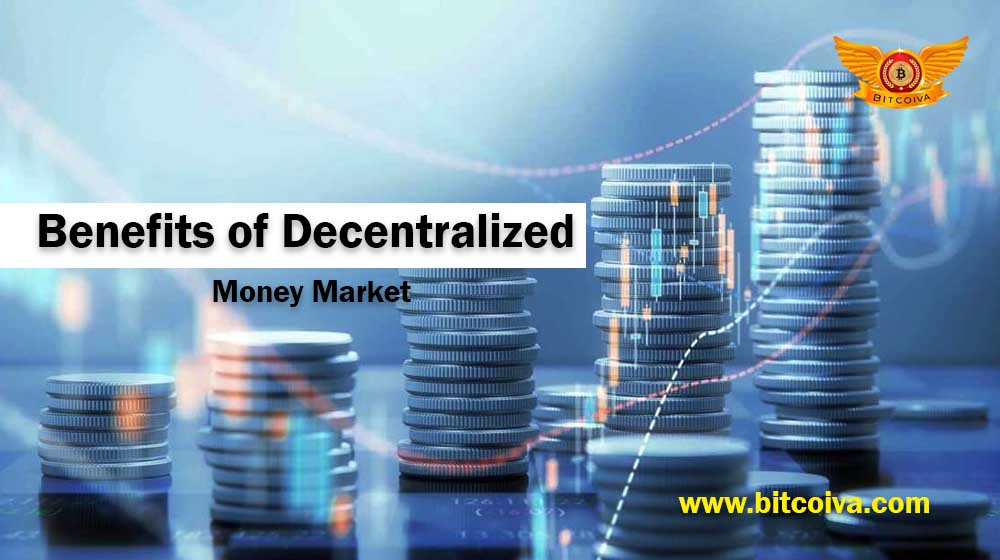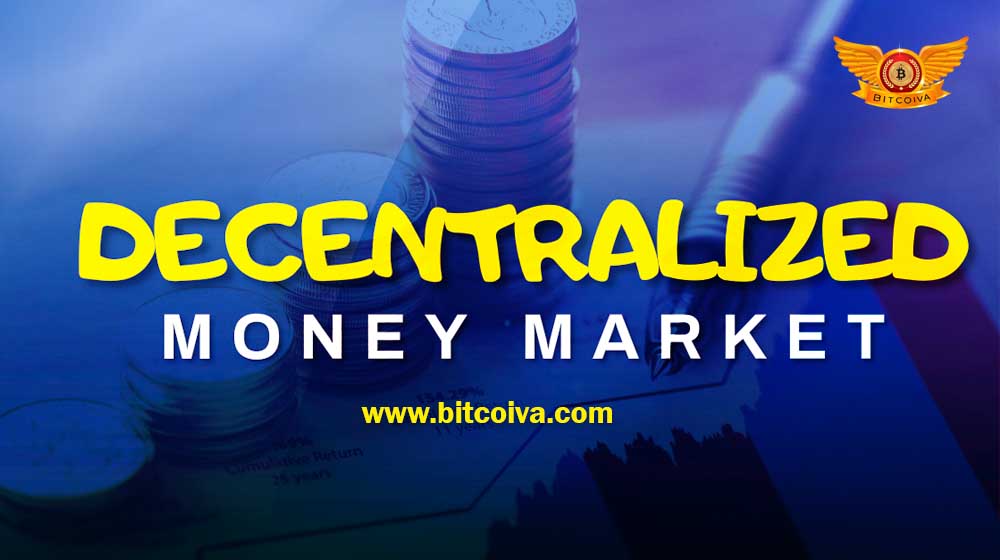There is a significant amount of money borrowed and lent in the economy and in economic activities. Borrowers use loans for a variety of things, from meeting basic necessities for consumption to making investments. Lenders either offer fixed or variable interest rates on the money they lend.
The borrowing and lending of assets not limited to traditional money markets. With just a few clicks, users may now borrow and lend their crypto assets thanks to the creation of Decentralized Finance (DeFi).
Let’s discover what a decentralized money market is and some of its advantages.
What Are Money Markets, and How Do They Operate
The crypto exchange India of commodities between buyers and sellers of products and services on a market is similar to that of a money market.
While the money market deals exclusively with money, collecting deposits from lenders and disbursing funds to borrowers with interest, the goods market deals with both commodities and services.
Initially, the money markets operated in a centralized environment that oversaw and regulated the interactions between lenders and fund borrowers.
Borrowers would approach money markets to obtain a short-term loan, while lenders would deposit a particular amount of cash in the money markets for a given level of interest on their savings.
Decentralized Money Market
These loans frequently backed by borrower collateral with a value equal to the loan. This guarantees the loan’s security by allowing the lender to reclaim the money in the event that the borrower defaults.
Through the money markets, borrowers pay both a fee to the money market and interest to the capital lenders (for facilitating the deal).
In addition to assisting the money market in covering its operating expenses, the interest paid on the capital borrowed also increases the lender’s access to liquidity.
The only issue with traditional money markets is that they too centralized, even though they have fulfilled their purpose admirably.
Due to the market’s centralization, a single entity has the ability to shape it whenever it wants to.
They are even free to steal the funds under their control and alter the interest rate as they see fit.
The decentralized money market, on the other hand, takes a totally different approach to money management and decision-making.
What Exactly is a Decentralized Money Market
Using various technologies, such as a smart contract, a decentralized money market is a market structure that enables investors, lenders, and borrowers to create a non-centralized market structure. Blockchain technology powers it. Since no actual market structure established and instead they all use a variety of web3 technologies, they can all trade freely under this market arrangement.
In a decentralized money market, buyers, sellers, and lenders have access to a network of computer cryptocurrency exchange India platforms and software that they can use for transactions, asking prices, and other market operations.
In order to remove the monopoly of a single corporation in charge and reduce potential points of failure, decentralized nodes manage the on-chain programmatic code that investors, lenders, and borrowers use to conduct their business.
Before we continue, let’s quickly go through the uses of this money market and the reasons why it is so popular:
Decentralized marketplaces foster better cooperation and trust among participants in transactions.
The accounts in the market system are safe and unbreakable.
In contrast to centralized markets, it provides investors the choice to trade without the presence of a governing agency.
For those who have embraced technological advances, the market structure is beneficial.
The market is ideal for blockchains and crypto currency trading in India.
Investors have access to and control over their money thanks to it.
Benefits of Decentralized Money Market
As previously said, decentralized nodes governance on-chain programmatic code that decentralized lenders and borrowers use to conduct business, breaking the monopoly of a single organization in control and minimizing potential points of failure. Here are a few advantages that emerge from decentralized money markets:
Permissionless
Users not required to seek authorization from a centralized authority before engaging in any money market activity in a decentralized setting. Anyone with access to the internet can easily borrow money for their necessities or earn interest on their investments. The structure of decentralized protocols is inherently censorship-resistant.
Noncustodial
User’s money held in the central gatekeeper’s possession in centralized money markets. DeFi protocols, like money markets, are non-custodial, and lenders and borrowers have direct control over the money. While consumers maintain complete control over their cash, on-chain smart contracts that follow pre-defined logic guarantee that they cannot corrupted.
Overcollateralized
Historically, fractional reserves and under-collateralization have been the norm for centralized financial markets. Due to peer pressure to increase business, these markets permit borrowers to withdraw more money than they have posted as security. Overcollateralization followed by decentralized money markets, which stabilize the system. Simply put, the intelligent contract liquidates the collateral of defaulting borrowers.
Composability
Composability is a design principle that permits system parts to communicate and work together. Different applications and protocols can communicate with each other without requiring permission. DeFi programs can assembled separately, opening up a world of unique mechanisms like yield extraction and intricate derivatives.

What Prospects Does a Decentralized Money Market Have for The Future
In a situation where customers are wary of self-serving biases in centralized money cryptocurrency exchange in India, the DeFi protocols have provided them with a profitable alternative. In keeping with its essential decentralized ethos, the former exhibits a blockchain-based ecosystem and typically gives governance authority to everyone in possession of native currency.
Similar to how the money markets previously concentrated on well-known cryptocurrency projects with high market capitalizations, new initiatives are now focusing on altcoins to unlock the value that has been locked there. Therefore, it is possible to assume that future DeFi money market protocols will probably explore unexplored ground.
Conclusion
Decentralized money markets serve as an essential foundation upon which the DeFi ecosystem’s advanced financial solutions can be constructed. Lending and borrowing are helpful on their own, but they are even more effective when combined with other DeFi “money legos” to produce a whole that is more effective than the sum of its parts. In addition to expanding in liquidity and offering more opportunities and services to more users, these money markets will grow in size and become the vanguard of DeFi innovation as yields in the real-world economy become more unpredictable. The decentralized cryptocurrency market has a more promising future than ever.
Visit us at: www.bitcoiva.com


Comments are closed.